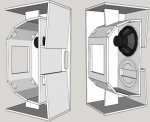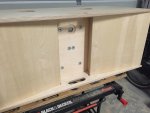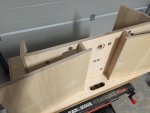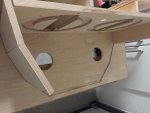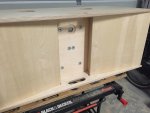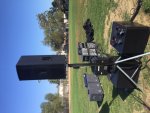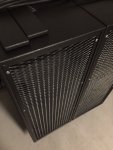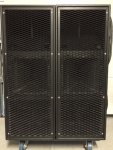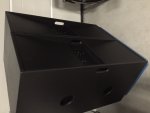I'll give my tuning experiences and try to help build on Max's comments, which i thought were very much on target.
I should start by saying for me the DIY has been as much about learning as it has been trying to get great, loud sound....so I'm perpetually starting over with tuning, as i progress with learning...
The mid section has also been the hardest for me. Mainly because as Max and Peter have pointed out, it needs to be measured reflection free, and at a distance of a least 2-3 meters IMO. I think the dipole nature of the mid needs a little distance to get timing right with the coax. (BTW, my goal in tuning is amplitude and phase traces overlying (or simply flat with FIR), in a reflection free environment. So any taste preferences after that simplify down to using system shelving filters.)
I'll attach raw measurements of my box's mid, HF, and VHF sections....in case they help.
I'm using the rcf 12's and the 60 degree horn.
Biggest eq's on my mid are cut at 380hz and boost at 140hz. I expect all our mids will vary a bit.
I've gone through several hardware platforms. First, like Max, I was using a dcx2496, but found I ran out of filters pretty quick.
Then I added in a x-32 and used the matrix outputs for xover and eq. The x-32 has 6 filters per output, but a xover filter chews up 2, so it was pretty limited too.
Then I added pld processing amps. This worked well. Only one gotcha (same as x-32), and that is processing is 48 khz. This matters in tuning the coax's two sections together. At 48khz the minimum delay time increment is 0.02ms. I thought this is surely quick enough, but at 6300khz crossover freq, 0.02ms equals 47 degrees of phase. So one click makes alot of difference in how pink noise sounds, and how phase traces align...surprisingly so.
I think maybe the difference in folks polarity settings is dependent on how crucial the minute timing is here, and whatever exact x-over freq and topologies they are using. The dcx2496 runs at 96k and this helps imo. I've used polarites this way and that depending successfully...but if the polarity/timing is wrong between HF and VHF, the coax sounds like it's spitting.
Last and current platform is minidsp, the 4x8 DA8, with FIR capability. I'm going to sound like an advertisement, but this $350 unit has been one of my best all time learning investments. I've learned that the driver by driver tuning eq we would normally do without FIR (IIR) stays non-FIR, because when you fix magnitude with IIR, phase gets fixed too.
Then IMO the real value of FIR after that IIR tuning is accomplished is then threefold.
First, the phase wrap that x-over filters bring goes away.
Second, with that gone, it becomes very easy to get smooth amplitude and flat phase matching throughout x-over,...
and third, the IIR eqs first used can be embedded into the FIR file which means you can have as many eqs as you want and all in one package..
Both Miichael's FirDesigner and rePhase work super...
Hope this helps...Mark


